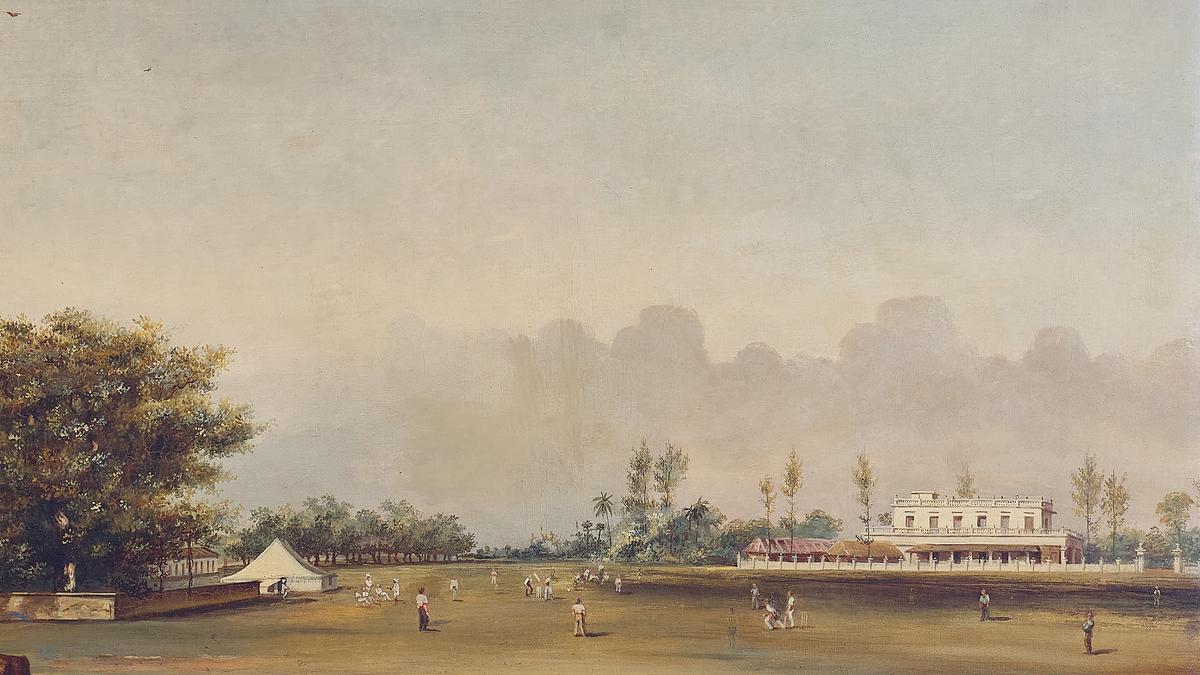
One of the world’s oldest cricket paintings, estimated in crores, is up for auction
The Hindu
One of the oldest paintings depicting cricket is set in Colonial Madras is estimated to be valued between ₹7 and ₹9 Crores
The year is 1792.
A large, lush swathe of green is speckled only by a lone cow and a group of men in scatter. A closer look reveals a set of stumps and a batsman mid-swing. A white pavilion not so far away suggests the presence of players at ease, while an unidentified building behind the field screams European influences.
We are in the middle of a quintessential British pastime in Colonial Madras of the 18th Century: a game of cricket, only frozen on canvas in oil paints.
This painting titled Cricket Match in India, its ephemeral quality reminiscent of Daniell’s feather-touch mastery, is one of the earliest depictions of the sport, and is set in 18th Century Colonial Madras, more specifically the Island. It is possibly the oldest painting of cricket, its provenance tied to the Tagore family collection and its publication in Maurice Shellim’s India and the Daniells. It was part of a private collection in Calcutta for many years, until acquired by Mumbai-based auction house AstaGuru. On the heels of the grand, moneyed spectacle of the IPL auction, the painting also goes under the hammer on December 14 and is estimated to be valued between ₹7 and ₹9 Crores.
“[The painting] is not only an early visual document of cricket in India but also a rare example of Daniell’s work in oil, a medium which is more rare when compared to his prolific watercolours and aquatints,” says Sneha Gautam, vice president of AstaGuru Auction House.
A closer look at this piece reveals many fine details. “At the centre of the composition, cricket players are depicted in various poses, engaged in the game. Their attire, with coloured trousers, adds vibrancy while the seated scorer nearby provides a casual, observational element. A grazing cow in the foreground introduces a touch of rustic Indian life,” Sneha adds. The players in coloured trousers are positioned as fielders while the scorers are seated as they observe the game. “Although the building’s [behind] exact identity remains uncertain, it anchors the scene in the historical and cultural context of British-occupied India,” adds Sneha.
The work is an important cultural document in Daniell’s seven-year-long record of 18th Century Colonial India and its sights and sounds, absorbed during his elaborate travels. He arrived in India in 1786 after obtaining permission from the East India Company to travel to Calcutta to work as an engraver, with his nephew, William, as his assistant. Their Daniells’ sketches and aquatints became a rare visual archive of the landscapes, architecture and culture of the region when photography as a medium did not exist. Oriental Scenery, a six-volume series featuring 144 aquatints, which presented India as a land of architectural marvels and picturesque vistas was purchased even by the East India Company to reinforce the narrative of British cultural and economic stewardship in the region.

The Karnataka government has drafted a comprehensive master plan for the integrated development of Kukke Subrahmanya temple, the State’s highest revenue-generating temple managed by the Hindu Religious Institutions and Charitable Endowments Department. The redevelopment initiative is estimated to cost around ₹254 crore and aims to enhance infrastructure and facilities for devotees.












